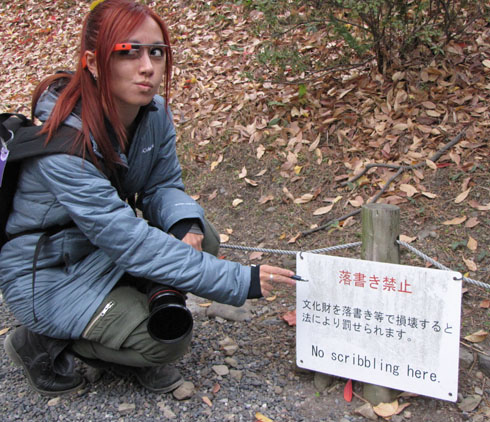Illiteracy & Scribbling
Sunday, December 15th, 2013Most large tourist sites in the USA offer at least some information in multiple languages. The same is true in Japan. English is the most common option there, with Korean and Chinese offered where there are a lot of tourists. It’s very reassuring to hear an English announcement of an upcoming destination when riding a train or a bus! And many signs are written in both Roman and Kanji, making life far easier for an American traveler like me who does not speak or read Japanese.
But not everything is available in English — not by a long way. So for me, traveling in Japan is an experience of effective illiteracy. Often, I cannot read even basic information. This makes it very difficult to know what’s up, what is possible, what is available, or where to go — and really drives home the importance of literacy for everyone in the modern world.
On the other hand, many businesses in Japan do have English names — although these names often don’t make sense to an English speaker. I take this as a warning to writers (like me!) who occasionally employ foreign words and phrases from languages we don’t speak. Caution is called for! But on the positive side, the results can be quite humorous. At the end of a long day, we ran across this sign, randomly placed beside a garden on the grounds of a castle in Kyoto:

But if we cannot scribble here, than where shall we scribble?
After a bit of laughter and debate, we decided this probably meant “No graffiti,” though even that left us puzzled, because there was nowhere to write except on the sign itself. And of course, in our perverse American way, being told not to do something that it had never occurred to us to do, made us wonder if maybe we ought to…
But no! Of course we didn’t scribble. But it made for a good photo op.
Later we were told that graffiti is considered a real problem. I saw a few “tags” while we were there, but if graffiti is a problem, to this casual observer it seems to be a problem under control.







